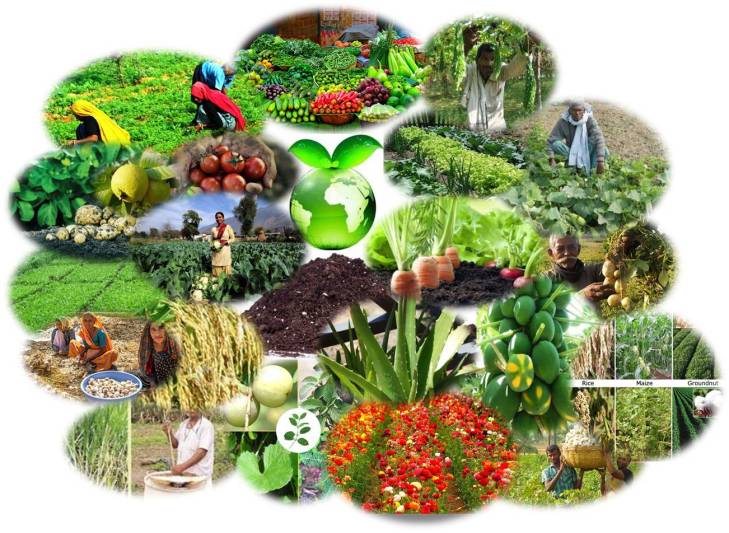Wheat is a staple crop that requires specific soil management and fertilization practices to achieve ...
Crop rotation, a key agricultural practice, involves growing different crops in the same field across seasons. This method enhances soil fertility, reduces pests and diseases, and improves crop productivity. It also prevents nutrient depletion in the soil, which occurs when the same crop is grown repeatedly. In this article, we will explore the significance of crop rotation, its long-term environmental benefits, and how it can increase farmers’ incomes by sustaining healthy soil and balanced crop cycles.
फसल चक्र, जिसे 'क्रॉप रोटेशन' कहा जाता है, प्राचीन काल से कृषि का एक महत्वपूर्ण हिस्सा रहा है। इसमें एक ही खेत में विभिन्न मौसमों में अलग-अलग प्रकार की फसलों को उगाया जाता है। यह तकनीक मिट्टी की उर्वरता और स्वास्थ्य को बनाए रखने के साथ-साथ फसलों की उत्पादकता को भी बढ़ाती है। इस लेख में हम फसल चक्र के महत्व और इसके लाभों के बारे में विस्तार से जानेंगे, और कैसे यह किसानों की आय बढ़ाने और भूमि के दीर्घकालिक संरक्षण में मदद करता है।


गेहूं और चना: इनका चक्र एक लोकप्रिय उदाहरण है। गेहूं की कटाई के बाद, चना उगाया जाता है, जिससे मिट्टी में नाइट्रोजन का स्तर बढ़ता है।
फसल चक्र की योजना: जैसे- खरीफ में धान और रबी में गेंहू का उपयोग करना।
फसल चक्र का उपयोग करना न केवल किसानों के लिए फायदेमंद है, बल्कि यह पर्यावरण और समाज के लिए भी महत्वपूर्ण है। इससे कृषि प्रणाली में स्थिरता आती है और दीर्घकालिक लाभ सुनिश्चित होता है।
Wheat and Chickpeas: Growing wheat followed by chickpeas is a common example. Chickpeas add nitrogen to the soil, improving wheat yields in the next cycle.
Seasonal Rotation: Rotating between different seasonal crops like rice during the monsoon and wheat during the winter maintains soil health and increases profitability.
Implementing crop rotation not only benefits farmers economically but also contributes to environmental sustainability. It enhances soil fertility, reduces reliance on chemical inputs, and promotes a balanced ecosystem. Farmers who adopt crop rotation practices are better positioned to achieve long-term success in agriculture.
Thus, understanding and adopting crop rotation is essential for maximizing farm productivity and ensuring the health of our agricultural land for future generations.
0
0
Wheat is a staple crop that requires specific soil management and fertilization practices to achieve ...
भारत में कृषि न केवल एक प्रमुख आर्थिक � ...
Neem cake is an organic byproduct derived from cold-pressed neem seeds after the extraction of neem ...
खरीफ फसलें-मानसून के मौसम में उगाई जात ...
Rice farming requires careful management of soil nutrients to ensure optimal growth and yield. The a ...
Fertilizers are essential substances used in agriculture to enhance the growth and productivity of c ...
Mango farming is a significant agricultural practice in many tropical and subtropical regions. Known ...
Organic farming is an agricultural practice that focuses on growing crops and raising livestock in a ...
Soil fertility is crucial for any farmer or gardening enthusiast. Fertile soil promotes healthy plan ...
Soil testing is a process that provides farmers with crucial information about the quality, nutrient ...
The tradition of farming in India is centuries old, and wheat and barley hold significant importance ...
The Aak plant (Calotropis gigantea) is a remarkable creation of nature, valued for its distinctive f ...
Roses, known for their beauty and enchanting fragrance, are the pride of every garden. However, main ...
Agricultural Pollution refers to the harmful effects caused by agricultural activities on the enviro ...
Temperature fluctuations have a direct impact on wheat farming. It affects sowing, growth, grain for ...
During summer, rising temperatures increase the risk of fire in wheat crops. As April begins, wheat ...
Agroforestry is a term derived from two words: "Agriculture" and "Forestry." It is a land-use system ...
कृषि में आर्टिफिशियल इंटेलिजेंस (AI) क ...
Contour Farming is a very common farming technique practiced in India. It is commonly practiced in h ...
Vegetables to Sow in May : Dear farmer friends, in the month of May, our plants don't usually suff ...
Papaya is a highly nutritious fruit loaded with medicinal properties. Its consumption helps regula ...
India is an agrarian country with three major agricultural seasons and a variety of crops being prod ...
Leaf curl disease, which causes leaves to curl, is a serious threat to agriculture. This disease aff ...
Intercropping is a farming method where two or more crops are grown together in the same field. It h ...
Mulching is a layer spread over the surface of the soil, primarily aimed at retaining soil moistur ...
India is an agriculture-based country, yet many farmers can’t use their land as it remains barren ...